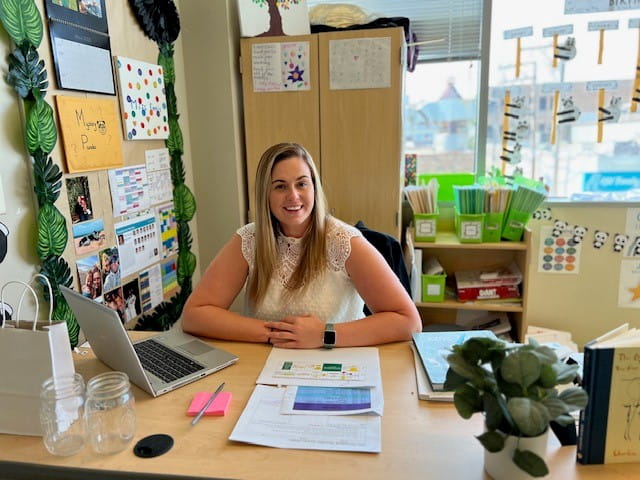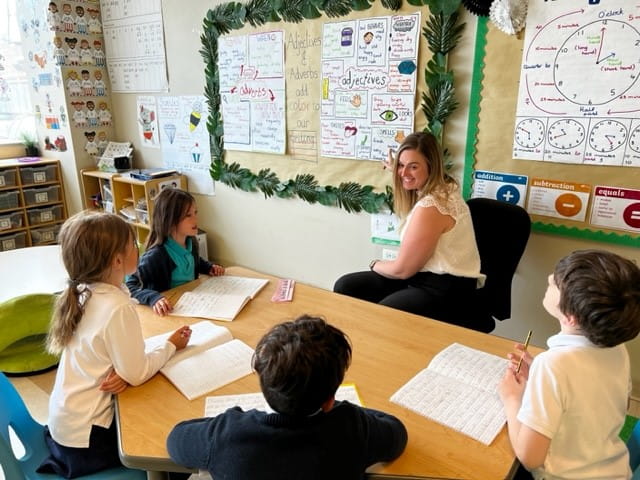We use cookies to improve your online experiences. To learn more and choose your cookies options, please refer to our cookie policy.

Imagine asking someone to complete repair work on a building without scaffolding. You wouldn’t because they need the scaffolding to support them and help them reach their end goal. So why would we ask a child to write a persuasive letter, narrative, or poem without any guidance, assistance, and clear steps to do so? The correct answer is, we wouldn’t. We would put techniques in place to support them in achieving their end goal.
One of the best feelings as a teacher is seeing pure joy and excitement on a child’s face when they have started to learn something new. Their eyes start to sparkle, their ears prick up with every new fact given to them, and like sponges, they absorb everything that is dripped down to them. However, to maintain this excitement for learning the child needs to feel supported. It is easy to forget how children learn and understand new concepts; it is easy to assume children all learn the same way.
Jerome Bruner devised Scaffolding in the 1970’s to engage children in the learning process and help them reach their learning objective. He believed that learning should be an active process, where children take an active role in their learning. He found that it was vitally important in early years development, where children are learning to learn, and slowly building the confidence to work independently.
Scaffolding in the classroom.

Scaffolding is a teaching technique in which the teacher delivers a lesson in clear segments. Each segment is like a stepping stone. If there were stepping stones missing on your path to cross the river, it would make it extremely difficult to make it across successfully. This is the same when we teach a new concept. A new concept is divided into different stepping stones. Each stepping stone needs to be taught and understood to reach the set outcome. If one of the stepping stones isn’t taught and consolidated, then you are allowing the child to ‘slip into the river’.
Scaffolding in the classroom is the same as scaffolding in construction, it is not designed to be there permanently. The goal is to gradually remove the scaffolding as the children become more proficient until they can complete the tasks and reach the outcome independently. Scaffolding is built around small gains, and each small gain should be celebrated. Instead of just celebrating when a child has reached the end goal, imagine the motivation and confidence they would gain if each step was celebrated; and then obviously built upon. Using Scaffolding in the classroom can improve learning outcomes quite drastically. Instead of seeing the learning process as an overwhelming task that is difficult to achieve, adding the stepping stones dissolves anxiety or negative feelings towards the task, and makes it seems more achievable.
How do we Scaffold?
There are two types of scaffolding: soft scaffolding - helping children as they work, giving tips, pointing to specific information, writing extra words, and hard scaffolding - using visuals, different worksheets, and manipulatives to take the children systematically through the activity.
There are several strategies that are very effective and are used daily in BISCLP.
Wall displays – pictures, keywords, and structures
Create a culture of curiosity – a place to seek more information such as a book or curiosity corner or investigation station.
Activate prior knowledge using open-ended questions e.g. what do you think would happen if…..?
Think, pair, share – give the children enough time to think about what you are asking, talk to their partner/group about it, and share their answers with the class.
Physically demonstrating words – create story maps and give actions for different parts, flashcards, and real-life objects.
Monitor, give feedback and encourage a culture of learning through mistakes. We do not grow and improve without making mistakes.
As Benjamin Franklin said, ‘Tell me and I will forget, teach me and I may remember, involve me and I learn’. When we involve the child in the dynamic process by giving them carefully planned stepping stones through multiple techniques, learning outcomes are at a considerable advantage. When the needs are matched to the learners, and we give them the support and scaffolding needed, we put them in a position where success is achievable and that is a very empowering feeling. Wouldn’t you agree?
Carlie Ennis
Year 2 Class Teacher & Global Campus Leader